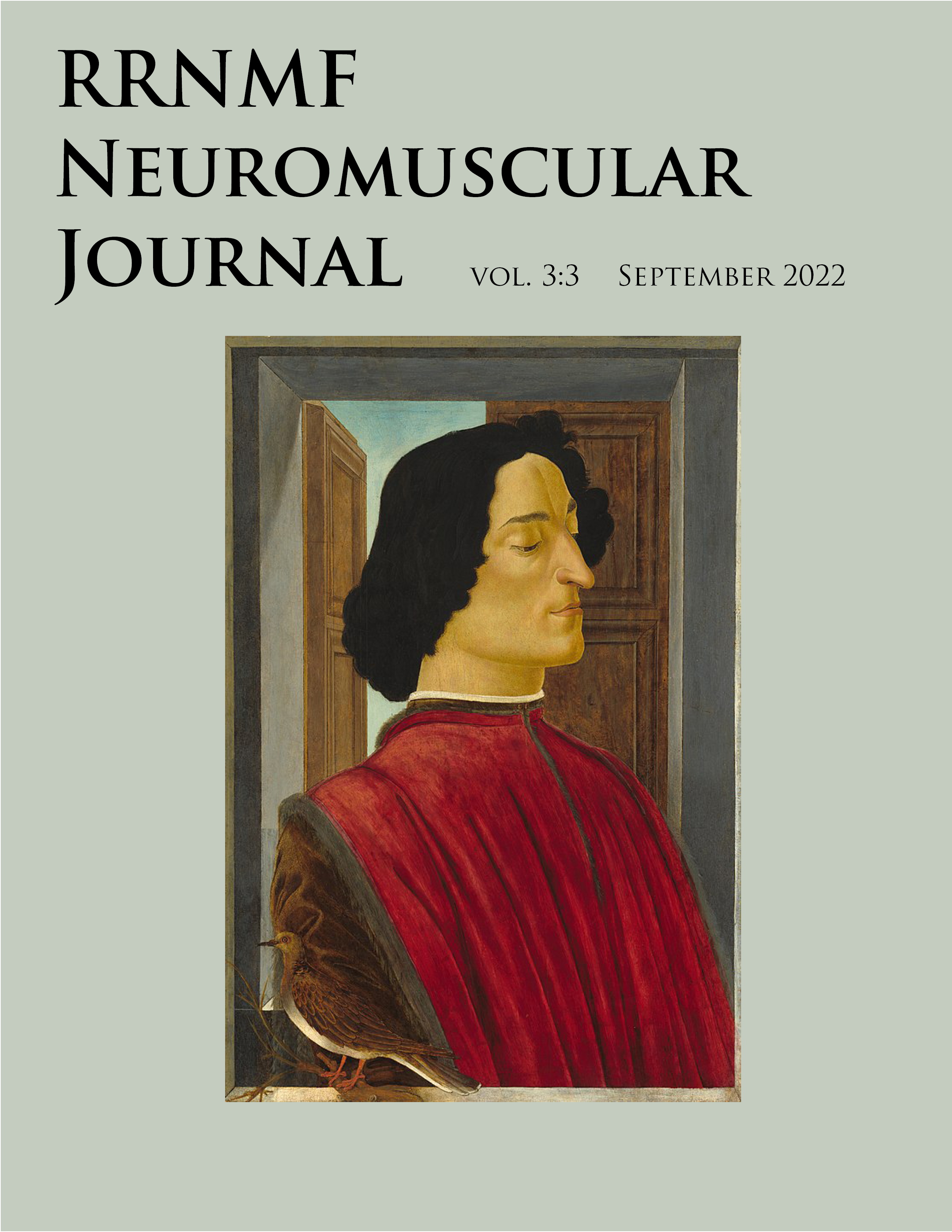“Ear of the Lynx" radiological sign in a patient with Primary Lateral Sclerosis.
DOI:
https://doi.org/10.17161/rrnmf.v3i3.18049Keywords:
Ear of the Lynx, Hereditary Spastic Paraplegia, Primary Lateral SclerosisAbstract
The “Ear of the Lynx" radiological sign refers to fluid attenuated inversion recovery (FLAIR) sequence cone-shaped abnormalities at the forceps minor region of genu of corpus callosum, seen on magnetic resonance imaging (MRI) of the brain. This radiological sign has been reported in Hereditary Spastic Paraplegia (SPG) type 11 and SPG Type 15. In this case report, we discuss the first description of this radiological sign in a 59 year old female patient with PLS.
Downloads
References
Riverol M, Samaranch L, Pascual B et al. Forceps Minor Region Signal Abnormality “Ears of the Lynx”: An Early MRI Finding in Spastic Paraparesis with Thin Corpus Callosum and Mutations in the Spatacsin Gene(SPG11)on Chromosome 15. Journal of Neuroimaging. 2009;19(1):52-60. doi:10.1111/j.1552-6569.2008.00327.x
Pascual B, de Bot S, Daniels M et al. “Ears of the Lynx” MRI Sign Is Associated with SPG11 and SPG15 Hereditary Spastic Paraplegia. AJNR Am J Neuroradiol. 2019;40(1):199-203. doi:10.3174/ajnr.a5935
Turner MR, Barohn RJ, Corcia P, Fink JK, Harms MB, Kiernan MC, Ravits J, Silani V, Simmons Z, Statland J, van den Berg LH; Delegates of the 2nd International PLS Conference, Mitsumoto H. Primary lateral sclerosis: consensus diagnostic criteria. J Neurol Neurosurg Psychiatry. 2020 Apr;91(4):373-377. doi: 10.1136/jnnp-2019-322541. Epub 2020 Feb 6. PMID: 32029539; PMCID: PMC7147236.
Gaillard, F., Murphy, A. Forceps minor. Reference article, Radiopaedia.org. (accessed on 10 Apr 2022) https://doi.org/10.53347/rID-4705.
Standring S (editor). Gray's Anatomy (39th edition). Churchill Livingstone. (2011) ISBN:0443066841.
Tish MM, Geerling JC. The Brain and the Bladder: Forebrain Control of Urinary (In)Continence. Front Physiol. 2020;11:658. Published 2020 Jul 3. doi:10.3389/fphys.2020.00658.
Singh S, Israrahmed A, Mall RV, et al‘Ears of the Lynx’ sign: an important and useful MRI clue for diagnosis of hereditary spastic paraplegia (HSP) caused by mutation in SPG 15 geneBMJ Case Reports CP 2021;14:e242275.
Pacheco FT, Rego MM, do Rego JIM, et al. "Ears of the lynx" sign in a marchiafava-bignami patient: structural basis and fiber-tracking DTI contribution to the understanding of this imaging abnormality. J Neuroimaging 2014;24:205–7
Fullam, T.; Statland, J. Upper Motor Neuron Disorders: Primary Lateral Sclerosis, Upper Motor Neuron Dominant Amyotrophic Lateral Sclerosis, and Hereditary Spastic Paraplegia. Brain Sci. 2021, 11, 611.
Statland JM, Barohn RJ, Dimachkie MM, Floeter MK, Mitsumoto H. Primary Lateral Sclerosis. Neurol Clin. 2015;33(4):749-760. doi:10.1016/j.ncl.2015.07.007
Downloads
Published
Issue
Section
License
Copyright (c) 2022 Nakul Katyal MD, Praveen D. Attele DO, Bryce C. Hoelscher MD, Erik R. Ensrud MD, Richard J. Barohn MD

This work is licensed under a Creative Commons Attribution-NonCommercial-NoDerivatives 4.0 International License.

